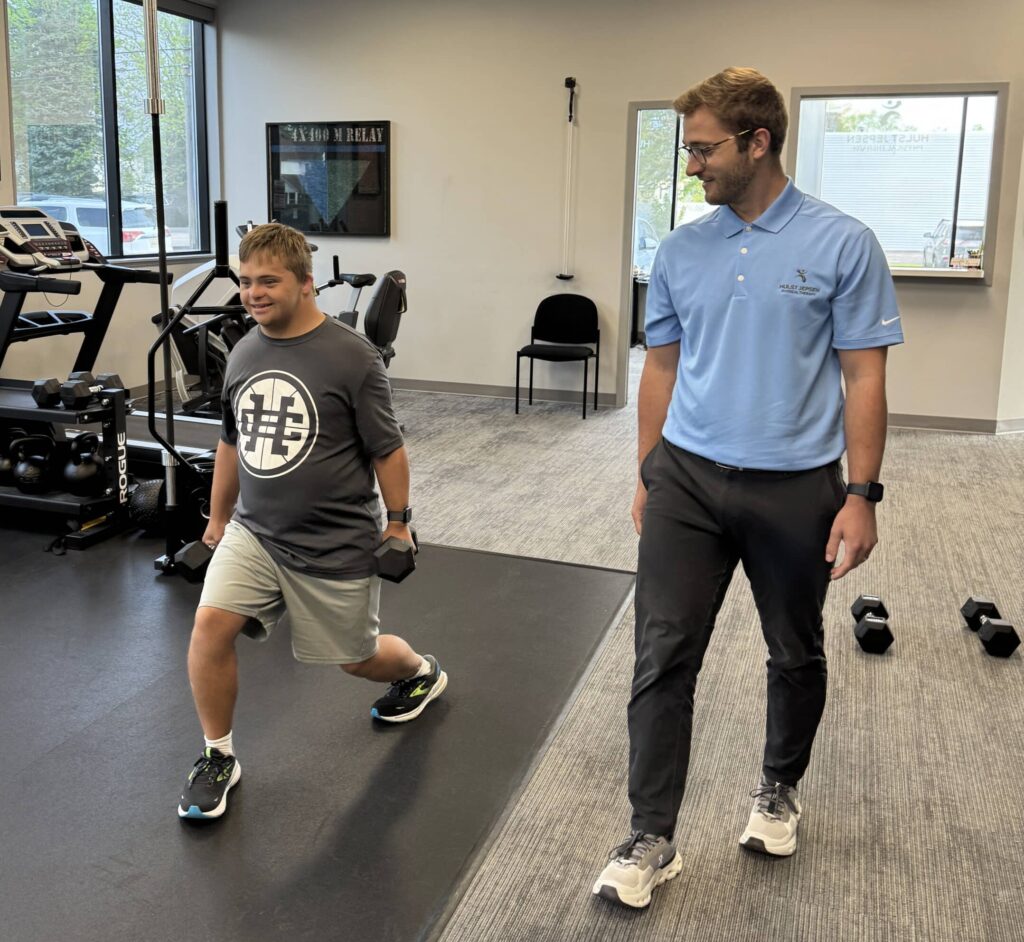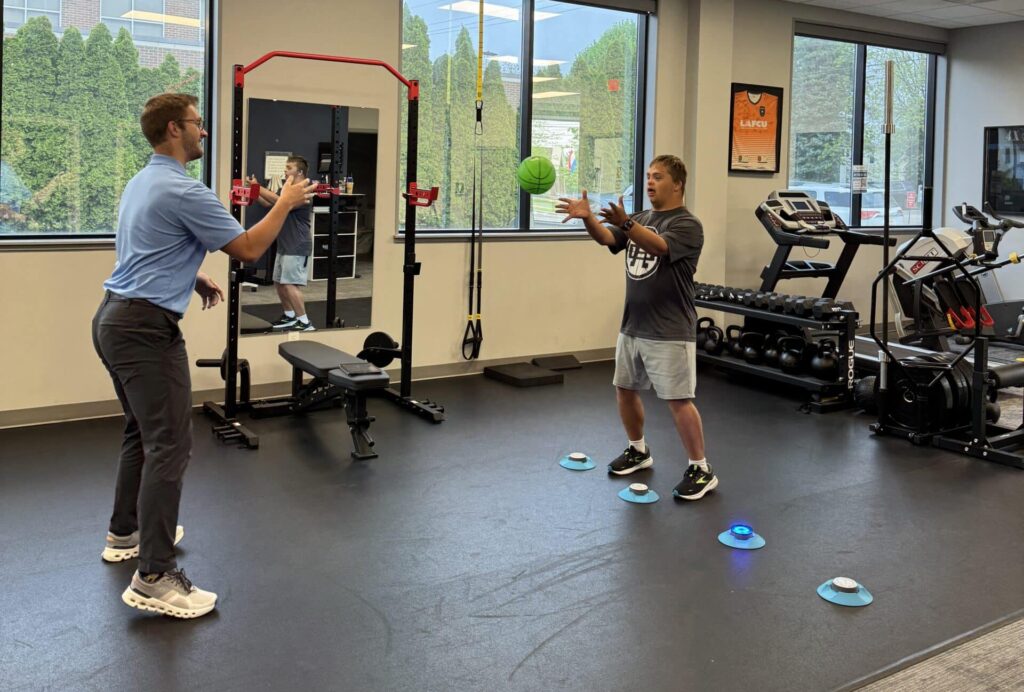Role of Physical Therapy in Individuals with Down Syndrome

Earlier this year, I had the privilege of working with Charlie. Charlie is a 23-year-old with Down syndrome(DS) who had right hip pain limiting his ability to go on hikes with his family. Normally, I gather information from my patients by asking questions about how long they’ve been experiencing pain, what activities aggravate it, and where the pain is located. Charlie, however, expresses himself differently from other people. Charlie loves to dance to Taylor Swift, and his mom started noticing that he was not participating with the family in his choreographed version of “Shake It Off.” He began to limp more while walking with them on their weekend hikes, and she decided it was time to take him in. X-rays demonstrated signs of severe arthritis, and after talking with their surgeon, they decided to have a hip replacement.
Over the next few weeks following his hip replacement, Charlie had to relearn how to squat down to a chair, get out of bed, and walk. Each week, we continued to progress in his ability to walk, jump, squat, and most importantly…dance! Charlie has been an absolute joy to work with, and it has shown me how important PT is for this population, from infants diagnosed with Down syndrome and even adulthood. This experience has helped me to realize the importance of physical therapy and how to screen for possible complications before they occur. The following information is meant to inform parents what to expect during their physical therapy sessions and how we can help their child reach their milestones and personal goals. At Hulst Jepsen Physical Therapy, we focus on building relationships, facilitating healing, and creating fun environments that help to achieve functional goals.
What is Down Syndrome
Down syndrome (DS) is the most commonly occurring chromosomal variance noted worldwide. Infancy rates of DS are approximately 1 in 1000 newborns1. Individuals with DS have physical characteristics that include hypotonia, ligament laxity, congenital heart disease, pelvis anomalies, and diminished muscle tone. Many individuals with DS have an increased likelihood of experiencing learning difficulties, poor cardiac health, diabetes, thyroid dysfunction, obesity, low bone density, dementia, and depression. Individuals with DS also demonstrate balance and strength deficits due to increased joint laxity, low muscle tone, poor postural control, and slow reaction times, which can lead to increased risk for falls and an elevated onset of fatigue.2,3
How can physical therapy help
Physical therapy can play a critical role in assisting individuals with Down syndrome and their caretakers in developing a plan of care that helps them reach their motor milestones and improve strength, coordination, balance, and functional independence.
Motor Milestones
Starting physical therapy from a young age will help your little one reach their motor milestones. It is common for kids with DS to be delayed in reaching these milestones, which may limit their participation and play with other children. Your physical therapist will assess the quality of their movements, including: sitting, crawling, kneeling, scooting, pulling up, standing, and walking. We will help create a fun environment that focuses on play and active participation to help your child reach these milestones. Children with DS often develop alternative movement patterns that may cause increased stress on the bones and joints, and these must be addressed early on. It is our goal to help facilitate safe movement patterns as they learn to navigate and explore their world.

Strength
We will identify areas of weakness that may be limiting independence and focus on specific exercises that are engaging and fun for the individual. These will help to establish a daily routine that enhances muscle tone and postural stability.
Balance and Coordination
Due to their low muscular tone, individuals with DS can have impaired balance and coordination, which may increase their risk for falls. Consult with your PT for examples of exercises to perform at home to improve their balance, fall prevention, and gross motor skills.
Functional independence and sport
It is important that we maximize independence within the home, utilizing ambulatory aids and assistive devices if necessary, and discuss barriers that may be preventing them from performing work-related tasks successfully. For individuals with Down syndrome who participate in sports, your physical therapist can assist in creating an exercise program that improves cardiovascular endurance and sport-specific training.
Is my child too old for Physical Therapy
At the core, our goal is to help maximize functional independence throughout the life-span. Physical therapy is not just for children with Down syndrome. Many adults with Down syndrome participate in recreational activities, run races, volunteer in their community, and have specific work related tasks that they need to be able to perform. Physical therapy aims to help these individuals reach these goals safely and efficiently.
References
- National Down Syndrome Society. What is down syndrome. London: NDSS. https://www.ndss.org/about-down-syndrome/down-syndrome/ (accessed October 5, 2024).
- Georgescu M, Cernea M, Balan V. Postural control in down syndrome subjects. The European Proceedings of Social and Behavioural Sciences. www.futureacademy.org.uk/files/images/upload/ICPESK%202015%2035 _333.pdf (accessed October 5, 2024).
- Malak R, Kostiukow A, Wasielewska A, Mojs E, Samborski W. Delays in motor development in children with down syndrome. Medical Science Monitor 2015;21:1904-1910. https://www.ncbi.nlm.nih.gov/pmc/articles/PMC4500597/ (accessed5 October, 2024
